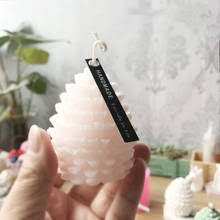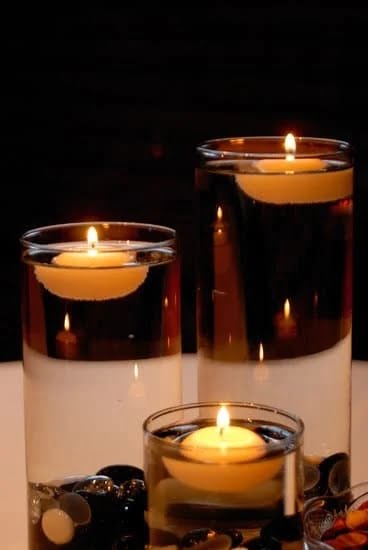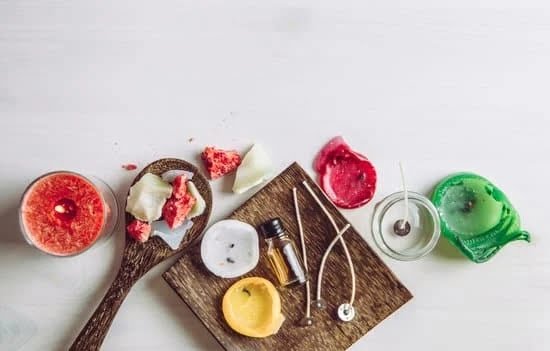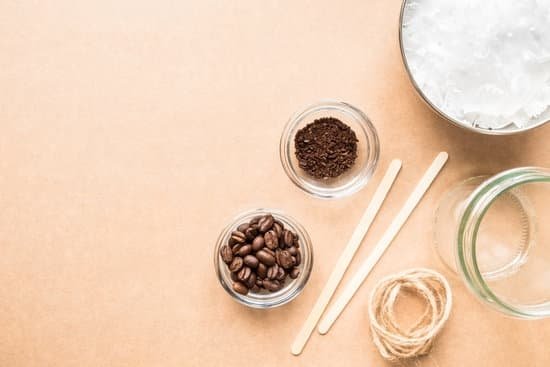Scented candles have become increasingly popular as people seek to create a cozy and inviting atmosphere in their homes. The choice of fragrance plays a crucial role in achieving the desired ambiance, making it important to select the right scent for your candles. While synthetic fragrances have long been the go-to option, there is growing interest in using essential oils as an alternative. In this article, we will explore the possibilities of scented candle making with essential oils.
Essential oils offer a natural and holistic approach to fragrance, providing not only a delightful scent but also potential therapeutic benefits. However, it is essential to understand the benefits and potential challenges of utilizing essential oils in candle making. From understanding extraction methods to ensuring compatibility with candle materials, there are factors to consider when incorporating essential oils into your creations.
In contrast to synthetic fragrances, which can contain harmful chemicals, essential oils are derived from plant sources and boast unique properties that can enhance the overall ambiance of your space. We will compare the pros and cons of using essential oils versus synthetic fragrances and address any concerns related to sustainability and potential harmful effects. Additionally, we will delve into the art of blending essential oils to create harmonious scents that align with different moods or occasions.
As you embark on your scented candle making journey, it is crucial to understand proper usage and measurement techniques for optimal fragrance intensity. We will provide guidance on how to measure essential oils accurately as well as recommendations for adjusting fragrance intensity based on personal preference and candle size. Safety precautions while handling essential oils will also be discussed.
Finally, we will explore creative packaging ideas and offer tips for marketing your homemade candles infused with essential oils. Whether you plan on using them for personal enjoyment or selling them as unique gifts, our aim is to help you fully explore the possibilities of scented candle making with essential oils.
Understanding Essential Oils
Essential oils have gained significant popularity in recent years for their various uses and therapeutic properties. In the realm of candle making, essential oils offer a natural and aromatic alternative to synthetic fragrances. Understanding essential oils is crucial for beginners looking to incorporate them into their candle making process.
When delving into the world of essential oils, it is important to understand how they are extracted. Essential oils are typically obtained through methods like steam distillation, cold-press extraction, or solvent extraction. Each method yields different types of essential oils with distinct characteristics and scents. It is important to choose high-quality essential oils that are pure and sourced from reputable suppliers.
Essential oils have different aroma notes such as top notes, middle notes, and base notes. The combination of these notes creates a well-rounded scent for your candles. Top notes are the first scents perceived when you open a bottle of essential oil or light a candle infused with it.
They are usually light and volatile, fading relatively quickly. Middle notes make up the body of the scent and provide the overall impression of the fragrance. Base notes are rich, long-lasting aromas that form the foundation of the scent.
In order to create harmonious scents for your candles, it is important to experiment with blending different essential oils together. This allows you to achieve unique combinations and balance in your fragrances. Consider creating blends by combining top, middle, and base note essential oils to create layered scents that evolve as the candle burns.
| Extraction Methods | Characteristics |
|---|---|
| Steam Distillation | Most common method; gentle extraction process that preserves volatile compounds |
| Cold-Press Extraction | Used for citrus oils; involves pressing the peel to release the oil |
| Solvent Extraction | Used for delicate flowers; solvent is used to dissolve the essential oil from the plant material |
Compatibility Check
There are many essential oils available in the market, each with its own unique aroma and properties. However, not all essential oils are suitable for candle making. In this section, we will discuss the importance of compatibility between essential oils and candle making materials to ensure safe and successful candle making experience.
Importance of Compatibility
It is crucial to determine which essential oils are safe for candle making to avoid any potential issues such as flammability, heat sensitivity, discoloration, or fragrance stability. Some essential oils may react negatively with certain waxes or additives commonly used in candle making, resulting in poor performance or even safety hazards. Therefore, it is important to do a thorough compatibility check before incorporating any essential oil into your candles.
List of Compatible Essential Oils
To make this process easier for you, here is a list of essential oils that are commonly used in candle making and are known to be compatible with most wax types:
- Lavender: Known for its calming properties and floral scent.
- Citrus (such as orange, lemon, or grapefruit): These oils provide a fresh and uplifting aroma.
- Vanilla: A popular choice for creating warm and cozy scented candles.
- Peppermint: Gives a refreshing and invigorating aroma.
- Eucalyptus: Known for its cooling and clearing properties.
However, it’s important to note that every oil supplier might have different compositions or blends of these oils. Therefore, it’s recommended to test a small sample before using them on a larger scale.
Potential Issues
When working with essential oils in candle making, there are a few potential issues that you need to be aware of. Heat can alter the scent profile of certain essential oils, so it’s important to choose ones that are heat-stable. Some essential oils may also cause discoloration in your candles, which can affect the overall appearance.
Additionally, flammability is a concern for oils with low flashpoints, so caution should be exercised when using them. Lastly, fragrance stability varies among different essential oils, so it’s important to choose oils that will retain their scent over time.
By ensuring compatibility between essential oils and candle making materials, you can create high-quality candles that not only smell amazing but also perform well and provide a safe experience for consumers.
Essential Oils vs. Synthetic Fragrances
Using essential oils as fragrances in candle making offers several advantages over synthetic fragrances. One of the primary benefits is that essential oils are derived from natural plant sources, which can enhance the overall ambiance and create a more authentic aromatherapy experience. Essential oils also possess therapeutic properties that can promote relaxation, reduce stress, and improve mood.
Unlike synthetic fragrances, which often contain potentially harmful chemicals and toxins, essential oils are a healthier and more environmentally friendly option. Synthetic fragrances can release volatile organic compounds (VOCs) into the air when burned, which can contribute to poor indoor air quality and respiratory issues. On the other hand, essential oils are free from synthetic additives and don’t produce the same level of VOCs when used in candles.
However, there are some drawbacks to using essential oils in candle making. One challenge is that essential oils tend to have a lower intensity of fragrance compared to synthetic fragrances. This means that you may need to use a higher concentration of essential oil in your candles to achieve the desired scent strength. It’s important to properly calculate the fragrance load and maximum concentration levels for different types of wax to avoid overpowering or underwhelming scents.
Another consideration is the cost of using essential oils in candle making. Essential oils are typically more expensive than synthetic fragrances due to their extraction methods and sourcing. Additionally, some essential oils may be more challenging to work with because they have specific temperature requirements or can cause discoloration in certain waxes. It’s crucial to do research on individual essential oils before incorporating them into your candle-making process.
Despite these challenges, many candle makers find that the benefits of using essential oils outweigh the cons. The use of natural ingredients allows for customization and experimentation with different blends and scents while providing a safer and healthier alternative to synthetic options on the market.
Essential Oil Blending 101
Creating unique and harmonious scents for your candles is an essential part of the candle making process. With essential oils, you have a wide range of options to create captivating fragrances that delight your senses. Here are some tips and guidelines for blending essential oils to achieve the desired fragrance combinations and balance:
- Start with a plan: Before you begin blending essential oils, it’s helpful to have a plan or idea in mind. Consider the mood or occasion you want to evoke with your candle scent. Whether you’re aiming for a relaxing aroma or an uplifting fragrance, having a clear vision will guide your blending process.
- Understand top, middle, and base notes: Essential oils are classified into different categories based on their evaporation rate called “notes.” Top notes are the first scents you perceive when smelling the candle, middle notes provide body and balance to the fragrance, and base notes add depth and lasting power to the scent. It’s important to include all three types of notes in your blend for a well-rounded fragrance.
- Experiment with proportions: The proportion of each essential oil in your blend significantly impacts the final scent. Start by blending small amounts of each oil together, keeping track of the number of drops used until you achieve your desired aroma. It’s crucial to take note of your measurements so that you can replicate successful blends in the future.
- Balance with complementary scents: Some essential oils naturally complement each other, enhancing their individual aromas when blended together. For example, lavender and bergamot create a soothing combination while lemon and peppermint offer an invigorating blend. Experimenting with compatible scents can lead to delightful surprises.
The possibilities are endless when it comes to blending essential oils for your candles. Don’t be afraid to explore and experiment with different oil combinations to find your unique and signature scent. With practice and creativity, you’ll be able to create candles that not only look beautiful but also fill the room with captivating aromas.
Proper Usage and Measurement
When making scented candles with essential oils, it is crucial to understand the proper usage and measurement of these oils to ensure optimal fragrance intensity in your candles. This section will guide you through the necessary steps to achieve the desired scent in your homemade candles.
Precise Measurement
To achieve consistent and balanced fragrance, it is essential to measure your essential oils accurately. Using a digital scale to weigh your oils in grams or ounces is recommended for precise measurement. Ensure that you follow the recipe or fragrance profile guidelines provided by the essential oil manufacturer. Overloading your candles with too much oil can lead to issues such as poor burning, so be mindful of the recommended usage rates.
Recommended Fragrance Load
Different wax types have varying capacities to hold fragrance oils. It is crucial to understand the recommended fragrance load for the specific wax you are using. For example, soy wax typically has a fragrance load of 6-10% per pound of wax, while beeswax may have lower load limits due to its natural scent potency. Research and experiment with different waxes to find the right balance that suits your preferences and candle type.
Adjusting Fragrance Intensity
It’s important to note that personal preference plays a significant role in determining the ideal fragrance intensity in your candles. If you prefer a stronger scent, you can increase the amount of essential oil within the recommended usage rate for your chosen wax type. Conversely, if you prefer a milder scent, reduce the amount of essential oil accordingly.
Remember that different candle sizes may require different amounts of essential oil for optimal fragrance intensity. Larger candle vessels may need more essential oil than smaller ones for an equal aroma impact. Be sure to take this into consideration when adjusting your measurements.
By understanding and implementing proper usage and measurement techniques when working with essential oils in candle making, you can ensure that your candles are infused with the perfect amount of fragrance for an enjoyable and satisfying sensory experience.
Safety First
When using essential oils for candle making, it is essential to prioritize safety. Proper handling of essential oils not only ensures personal safety but also helps avoid potential hazards during the candle-making process. Here are some important precautions to keep in mind when working with essential oils:
- Dilution: Essential oils are highly concentrated, and using them directly can cause skin irritation or other adverse reactions. It is crucial to dilute essential oils properly before adding them to your candles. Carrier oils such as jojoba oil or sweet almond oil can be used for dilution.
- Ventilation: Essential oils can release strong aromas that may become overwhelming in a closed space. Make sure to work in a well-ventilated area or use appropriate ventilation equipment to prevent breathing in concentrated amounts of essential oils.
- Allergies and Sensitivities: Some individuals may be allergic or sensitive to certain essential oils. It is important to be aware of these allergies and sensitivities and take necessary precautions when choosing and using essential oils in candles.
- Storage: Essential oils should be stored properly in dark glass bottles away from direct sunlight, heat, and moisture. Keep them out of reach of children and pets to prevent accidental ingestion or spills.
- Labeling: Clearly label all containers of essential oils, including their contents and any warnings or instructions for use. This helps prevent confusion and ensures safe handling by yourself or others who may come into contact with the oils.
By following these safety precautions, you can enjoy the benefits of using essential oils in candle making while minimizing the risks associated with their use.
| Safety Precautions |
|---|
| 1. Dilution |
| 2. Ventilation |
| 3. Allergies and Sensitivities |
| 4. Storage |
| 5. Labeling |
Final Touches
Packaging, Labeling, and Presenting Your Essential Oil Infused Candles:
After putting in all the effort to create your beautiful scented candles using essential oils, it’s time to focus on the final touches – packaging, labeling, and presenting. These elements are crucial in enhancing the overall appeal of your essential oil-infused candles and creating a memorable experience for your customers or recipients.
When it comes to packaging, think about choosing materials that reflect the natural and therapeutic qualities of essential oils. Consider using eco-friendly options like recyclable or biodegradable containers that align with the sustainability aspect of using essential oils. Additionally, explore creative packaging ideas such as reusable jars or stylish candle tins that can be repurposed by the recipient even after the candle is burned.
Labeling is another important aspect that adds professionalism and credibility to your homemade candles. Make sure to include necessary information such as the name of your brand or business, fragrance name, and any specific details about the essential oils used. If possible, provide insights into the benefits or unique properties associated with each essential oil. This will not only educate consumers but also enhance their appreciation for your product.
To further elevate your presentation, consider incorporating essential oil-themed labels or tags that align with the fragrance profiles of your candles. You can print labels featuring images or illustrations related to specific scents such as lavender fields for a relaxing scent or citrus fruits for an energizing aroma. These visual cues will engage customers and help them associate specific scents with their intended effects.
Finally, marketing and selling your scented candles can be an exciting venture once you have perfected your essential oil-infused creations. Emphasize the use of essential oils as a unique selling point in all promotional materials and communication with potential buyers. Highlight their natural and therapeutic properties along with the craftsmanship involved in hand-poured candles made with premium quality ingredients.
Invest in aesthetic product photography that showcases not only the design and packaging of your candles but also the enticing aura created by their scents. Utilize social media platforms, online marketplaces, or even local craft fairs to reach a wider audience. Consider offering sample sets or gift packages that allow customers to experience a variety of essential oil blends, enticing them to come back for more.
In conclusion, packaging, labeling, and presenting your essential oil-infused candles provide the finishing touches that make your product stand out from the crowd. By selecting eco-friendly packaging materials, creating informative and visually appealing labels, and utilizing creative marketing techniques, you can elevate your homemade candles into unique and sought-after products. So go ahead and let your creativity shine through as you present your beautifully scented creations to the world.
Frequently Asked Questions
What essential oils are safe for candle making?
When it comes to candle making, there are several essential oils that are generally considered safe and suitable for use. Popular choices among candle makers include lavender, eucalyptus, lemon, peppermint, and vanilla essential oils. These essential oils not only provide pleasant scents but also tend to have good stability and compatibility with candle-making materials.
However, it is important to note that not all essential oils are safe for candle making as some can be flammable or may produce unpleasant odors when burned. It is advisable to research and understand the properties of individual essential oils before using them in candles.
Is it safe to put essential oils in candles?
Yes, it is generally safe to put essential oils in candles when done correctly and responsibly. Essential oils offer a natural alternative to synthetic fragrances often found in commercially produced candles. However, it is important to exercise caution and follow proper guidelines while incorporating essential oils into candle-making processes.
Essential oils should be used in appropriate quantities as excessive amounts could affect the combustion process or lead to an overpowering scent when the candle is lit. Additionally, it is crucial to ensure that the chosen essential oil does not contain any combustible substances that may pose a fire hazard.
Is it better to make candles with essential oils or fragrance oils?
The choice between using essential oils or fragrance oils for making candles largely depends on personal preference and desired outcomes. Essential oils are derived from natural sources such as plants and flowers and are known for their therapeutic properties. They provide a more natural scent experience compared to synthetic fragrance oils commonly used in commercial candles.
On the other hand, fragrance oils offer a wider variety of scents and typically have stronger throw (scent dispersion) than most essential oils. Fragrance oils can also be more affordable than certain high-quality essential oils. Ultimately, the decision on whether to use essential or fragrance oils will depend on factors such as desired scent profile, personal beliefs regarding natural products, budget constraints, and intended purpose of the candles being made.

Welcome to my candle making blog! In this blog, I will be sharing my tips and tricks for making candles. I will also be sharing some of my favorite recipes.





